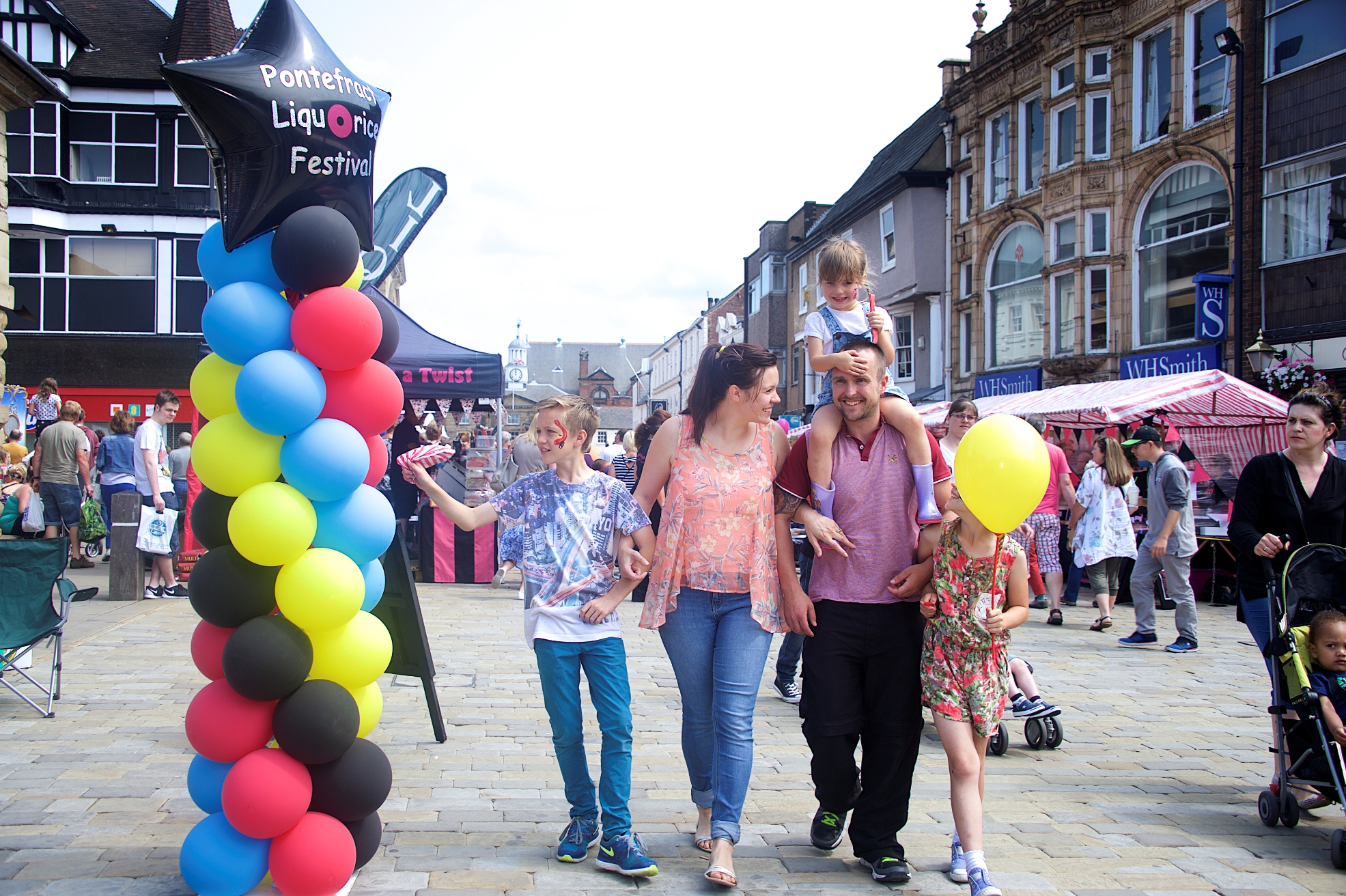Pontefract in West Yorkshire is an ancient settlement, but little is known of the area before the Norman occupation. Known as Kirby in Saxon times, the town eventually became Pontefract, the home of liquorice. The origin of the name is a mystery as there appears not to have ever been a bridge, let alone a broken one! There may have been a bridge nearby at the confluence of two rivers known locally as the Wash.
After the Norman invasion the De Lacy family built a motte and bailey castle in the place that became Pontefract. Now ruined, the castle was once one of the most important strongholds in the north of England. The intimidating sight had a sheer drop to the north and also a dry moat. Built on solid rock, the castle was safe from the threat of undermining. There are broad views to the north and east giving protection from surprise attack.
Although ruined, much of the walls and structure are still plain, including the gatehouse. There are traces of the Norman chapel. While the towers no longer dominate the town, the seven bases are still there. In the domestic parts visitors can make out the bake-house, the ‘behive’ baking ovens and the buttery.
The Castle eventually passed into the ownership of the Lancastrian cousins to the King, Richard II. When Henry IV usurped the throne, the castle became his, and in it he kept the overthrown Richard II. Here the deposed king died. Some claimed that the King had him starved to death in an oubliette. Others thought that he starved himself.
During the Civil War the Royalists had control of the castle. Late in the war, Oliver Cromwell arrived to lay siege. The castle was difficult to undermine because it stood on rock, so it withstood the siege for five months. Later, Parliament ordered its demolition. The castle remains are open to visitors.
Pontefract Market
In the woollen district of West Yorkshire, the town became an important market town. In 1194, Henry II granted a licence to hold an eight day fair here. Such fairs were great affairs with merchants from Europe coming to buy and sell. By the C14th there were eleven fairs in the town, one of fifteen wool and cloth fair towns in Yorkshire. By the end of the C14th Pontefract was the largest town in the West Riding. In 1484 Richard III, with another charter, attested the town’s right to hold a market forever on Saturdays. Fairs had entertainments such as cock-fighting and even the buying and selling of a wife!
The Market Place is in the centre. Its past told by street names such as Woolmarket, Beastfair, Horsefair, Shoemarket and Cornmarket. The Market Hall dates from 1859 and Lord Palmerston opened it in 1860. Following a fire, the Hall was rebuilt, in 1957. However, The it was returned to its former glory in 1999 along with other town centre improvements
Today, on Wednesday and Saturday there are traditional markets, and there is a smaller produce market on Fridays. There is also an indoor market which sells a wide range of goods including the famous local Pontefract Cakes. These flat, round, old-penny-sized cakes, made from liquorice, have a picture of the castle stamped on every one of them.
If you have enjoyed a visit to Pontefract, do tell us about it.

